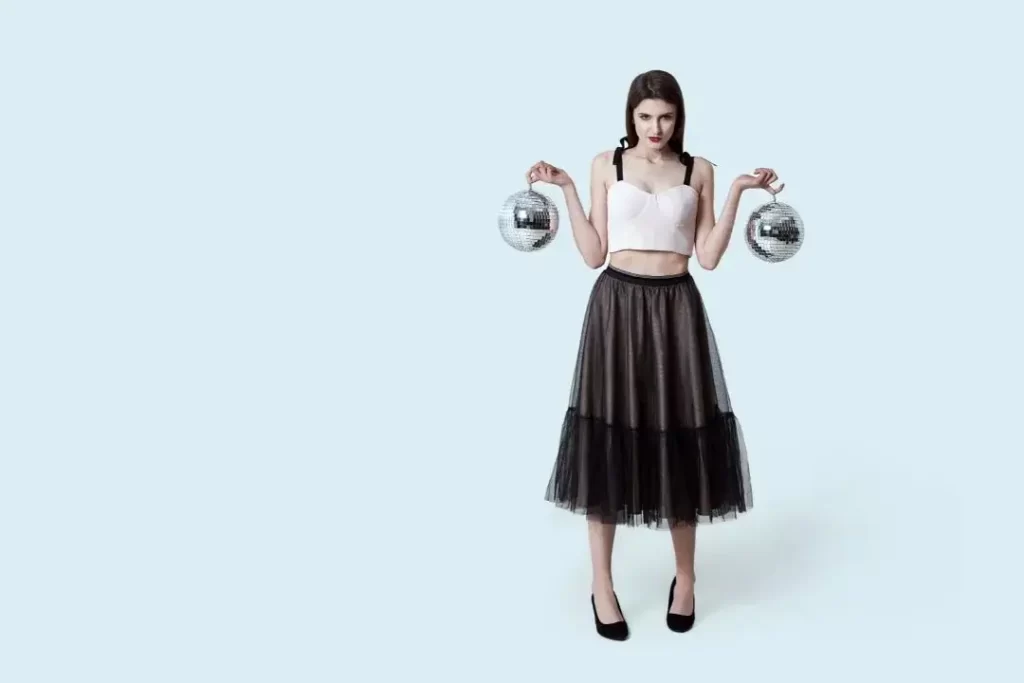
Why Clothing Brands Fail
Top Different Types of Shirts for Women and Men Top Different Types of Shirts for
You may be familiar with the term “skirt,” but did you know there is a wide variety of skirt styles, each with unique characteristics that can transform your outfit and offer diverse options? This comprehensive guide on types of skirts names will walk you through the fascinating world of skirts, their origins, features, pros and cons, and how to care for them. We’ll also address any lingering questions, so read on, as this will undoubtedly broaden your fashion knowledge and capture your interest.
Skirts have been an integral part of fashion for centuries. Tracing their origin back to ancient civilizations, they have evolved through the ages and hold a prominent position in contemporary fashion. Throughout history, skirts have been symbols of femininity, status, and personal style, constantly adapting to cultural changes and playing a crucial role in reflecting societal tastes.

Knowing the different types of skirts allows you to experiment with unique looks and silhouettes. It helps you discover which styles enhance your appearance, flatter your body shape, and suit your taste. That being said, it’s time to explore the many faces of skirt designs, so you can create the perfect outfit for every occasion.

An A-Line skirt, as the name suggests, is shaped like the letter “A.” This classic style originated in the 1950s by French designer Christian Dior and remains a popular choice among fashion enthusiasts. It features a fitted waist that gradually flares out, creating its eponymous silhouette.
The A-Line skirt offers a flattering and versatile design that complements various body shapes and sizes. Its wider hem creates an illusion of a narrower waist, enhancing a person’s natural curves. It also adapts seamlessly to both casual and formal occasions.
Pros: A-Line skirts are timeless, versatile, and suit various body types. They can be easily dressed up or down and offer a comfortable fit.
Cons: The flare may add extra volume to certain body shapes, and the classic design may not be as appealing for those seeking a more modern or edgy style

Pleated skirts are characterized by neat folds created by doubling their material and securing it in place. With origins in ancient Greece and Egypt, these skirts evolved throughout history and experienced a resurgence in popularity during the 20th century.
Pleated skirts incorporate depth and movement in their design. The pleats add a touch of visual interest, giving the skirt a distinct flow as the wearer moves. There are different types of pleat styles, including knife pleats, box pleats, and accordion pleats, each offering a unique look.
Pros: Pleated skirts are versatile, visually appealing, and suit various occasions, from casual to formal events. The design adds structure, creating a slimming effect for many body shapes.
Cons: Inputrequiredance on careful maintenance to keep the pleats neat and crisp. Additionally, pleated skirts may not be flattering on all body types, as the volume created by the pleats can make certain shapes appear wider.

Pencil skirts are slim-fitting, narrow-cut skirts that typically end just above the knee or slightly below. This elegant and classy style was first introduced in the 1940s by renowned designer Christian Dior. Since then, pencil skirts have become a go-to wardrobe option for professional women worldwide.
Known for their tailoring and flattering style, pencil skirts seamlessly hug the body and create a streamlined silhouette. Often associated with professional and formal attire, their sleek design can elevate an outfit, making it ideal for meetings, presentations, or social events.
Pros: Pencil skirts provide a slimming effect, enhance curves, and are perfect for professional and formal settings. They can also be easily paired with other wardrobe staples for a quick and chic ensemble.
Cons: Pencil skirts may be uncomfortable for some people due to their tight fit, and they may not complement every body shape. Additionally, they may limit mobility when walking, preventing free and fluid movement.

Maxi skirts are a flowing, long-length skirt design that covers the legs and typically falls, at max, just above the ankle. Beginning in the 1960-70s bohemian fashion movement, these skirts can be chic, bohemian, or luxurious, coming in many fabrics, patterns, and styles that suit various occasions.
Maxi skirts offer a blend of style, versatility, and comfort. They drape elegantly, elongating the body and providing excellent coverage. Maxi skirts can dress up casual looks or add a touch of bohemian flair to an outfit.
Pros: Maxi skirts are adaptable, comfortable, and suitable for all body types. They create a visually appealing lengthening effect and pair well with different tops and accessories.
Cons: Maxi skirts may not work well for shorter individuals, as they can create a “swallowed-up” appearance. Additionally, finding the right length can be a challenge, as too long skirts can pose a tripping hazard.

The Mini skirt is a short-length skirt ending at mid-thigh that gained massive popularity in the 1960s. Mary Quant, alongside André Courrèges and John Bates, popularized this iconic piece, contributing to the “Swinging Sixties” fashion revolution and youth culture movement
Recognized for their bold and daring design, mini skirts showcase the legs and present a fun, playful, and flirty look. They come in various materials, colors, and patterns, appealing to a wide range of fashionistas and representing freedom of expression and rebellion.
Pros: Mini skirts show off one’s legs, provide a youthful appearance, and allow for versatile styling, as they can be combined with various tops, stockings, and shoes.
Cons: Mini skirts may not offer as much coverage as desired, restrict bending or sitting without discomfort, and aren’t always suitable for professional or traditional settings

Midi skirts are a versatile, medium-length style that falls between the knee and mid-calf. First emerging as a symbol of practicality and women’s empowerment during the 20th century World Wars, midi skirts gained widespread popularity throughout the 1940s and persist as a fashionable choice today.
Offering a balance between formality and casual style, midi skirts provide ample coverage while maintaining an air of sophistication and elegance. They look good on a variety of body shapes, accentuating the waist and creating a balanced silhouette.
Pros: Midi skirts are both fashionable and functional, offering a wearable length for various activities and occasions. They create a flattering shape for many body types and can be worn with a range of footwear options.
Cons: Some individuals may find midi skirts make their legs look shorter or wider. Choosing the appropriate length and style can be crucial in avoiding these potential issues. Also, midi skirts may require strategic styling to strike the perfect balance of look and functionality.

Wrap skirts are a timeless style consisting of a piece of fabric that wraps around the waist and fastens with a tie or button. Typically designed to have an adjustable fit, this skirt style dates back centuries and is prevalent in various cultures around the globe.
One of the main draws of a wrap skirt is its adjustable nature, making it universally flattering. The overlapping design and tie or button closure ensures a comfortable fit. Wrap skirts are available in numerous materials, patterns, and lengths, making them versatile additions to your wardrobe.
Pros: Wrap skirts suit almost all body types due to their adjustable nature. They are versatile, easy to wear, and can adapt to different occasions effortlessl.
Cons: The design of wrap skirts may pose some challenges in terms of maintaining adequate coverage when moving or sitting, as the wrap overlay can shift. Additionally, some may find the style too casual or informal for particular settings.

Named for its resemblance to tulip petals, the tulip skirt features a layered, overlapping design that creates a gentle curve at the hemline. With origins in the late 20th century, the tulip skirt is both stylish and feminine, offering a romantic and flattering look.
The tulip skirt’s distinct characteristics are its crossed-over front panels and soft, curved hemline resembling a blooming flower. This design works particularly well for those with hourglass or pear-shaped figures, as it emphasizes the waist and offers a flowy, feminine finish.
Pros: Tulip skirts flatter various body shapes and help to accentuate the waistline. They are visually appealing and give off a breezy, romantic vibe.
Cons: Tulip skirts may not be suitable for all occasions, as the design can be seen as more informal, and they may add extra volume around the hips or waist, which might not be flattering for all body types.

Asymmetrical skirts are a modern, unconventional style that features an uneven hemline. Gaining popularity in recent years, they showcase a dynamic, avant-garde design, which allows the wearer to make a unique fashion statement
Asymmetrical skirts boast an irregular hem, which may be high on one side and low on the other or display an angled cut across the front or back. This striking design catches the eye and lends an edgy twist to a traditional skirt, giving it that extra “wow” factor.
Pros: Asymmetrical skirts offer a unique, modern look that stands out from other styles. They provide an ideal option for those looking to make a fashion-forward statement and can be dressed up or down for various occasions.
Cons: Asymmetrical skirts may not suit everyone’s taste, and some may find the design too unconventional or challenging to style. Additionally, they may not be as flattering on certain body shapes as other skirt styles.

In conclusion, learning about all these various types of skirts names and their unique features not only enriches your fashion knowledge but allows you to choose the best option which resonates with your style. From the classic A-line to the avant-garde asymmetrical design, each style serves a distinctive purpose in enhancing your silhouette, body shape, and outfit choices. We hope this comprehensive guide on types of skirts names & features has provided you valuable insight into the fascinating world of skirts and answered any lingering questions, ensuring you step out confidently, ready to showcase your best look on every occasion.
A: You can always consider altering a skirt to achieve the perfect length that flatters your body shape. Many brands offer skirts in petite, regular, and tall sizes, catering to varying body proportions. Alternatively, a skilled tailor can provide custom adjustments to ensure a perfect fit.
A: Absolutely! Skirts are versatile and can be worn throughout the seasons by pairing them with appropriate accessories, footwear, and top layers. Experiment with tights, boots, and warm layers for colder weather to make your favorite skirts an all-season fashion staple.
A good starting point is to identify your body shape (hourglass, pear, apple, rectangle, or inverted triangle) and then research which skirt styles are most complementary. Trial and error can help you discover which styles best suit your body type and personal taste. Don’t be afraid to try different styles and experiment with combinations to learn what works best for you.
Expert Custom Clothing Manufcaturer

Top Different Types of Shirts for Women and Men Top Different Types of Shirts for

What You Must Know About Clothing Samples? Before You Produce a Single Garment: What You

How Much Does It Cost To Make a Hoodie A Complete Cost Breakdown for Custom

Discover the Types of Buttons Discover the Types of Buttons That Transform Style and Functionality
Most Recent Posts
Expert Custom Clothing Manufcaturer
Join our Mailing list!
Get all latest news, exclusive deals and updates.